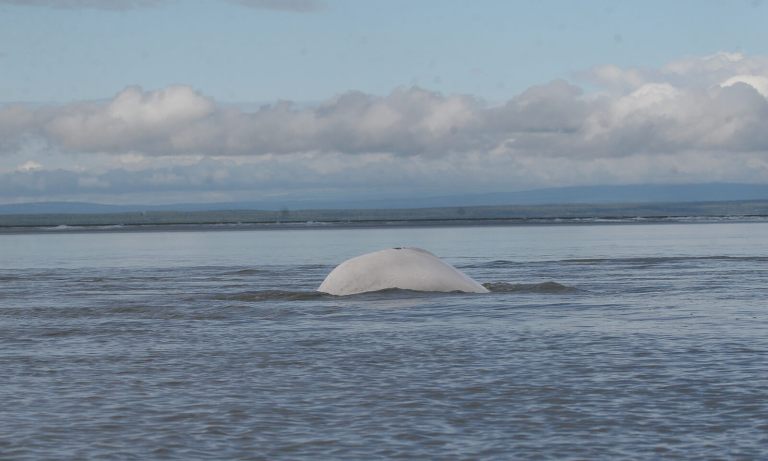
NOAA’s Office of Response and Restoration is assisting the U.S. Coast Guard in responding to a leaking natural gas pipeline in Cook Inlet, Alaska.
The leak was first reported to federal regulatory agencies on Feb. 7, by Hilcorp Alaska, LLC, which owns the pipeline located about 3.5 miles northeast of Nikiski, Alaska.
The 8-inch pipeline runs 4.6 miles from the shoreline to Hilcorp’s Platform A and then branches off to three other platforms in the inlet. The natural gas is used for fuel to support ongoing operations, as well as heating, and other life support functions.
The pipeline continues to leak between 200,000 and 300,000 cubic feet of processed natural gas a day into the inlet. This processed natural gas is 99% methane. The company said the presence of ice is preventing divers from conducting repairs, and the sea ice is not expected to melt until April.
Once notified of the leak, the U.S. Coast Guard contacted the scientific support coordinator in Alaska, Catherine Berg. She was asked for information on the expected area presenting flammability concerns in support of cautionary notices being broadcast to mariners. As scientific support coordinator, Berg routinely provides scientific and technical support during response for oil spills and hazardous materials releases in the coastal zone, helping to assess the risks to people and the environment.
Because of the nature of the release, in this case, Berg is providing technical support to the Coast Guard and the state as requested, drawing upon similar networks and expertise.
You can read more about NOAA’s work in response and restoration in Alaska in the following articles:
An Oiled River Restored: Salmon Return to Alaskan Stream to Spawn
At the Trans Alaska Pipeline’s Start, Where 200 Million Barrels of Oil Begin their Journey Each Year
Alaska ShoreZone: Mapping over 46,000 Miles of Coastal Habitat
See What Restoration Looks Like for an Oiled Stream on an Isolated Alaskan Island
Melting Permafrost and Camping with Muskoxen: Planning for Oil Spills on Arctic Coasts
National Marine Fisheries has more information on the endangered Cook Inlet beluga whales.
